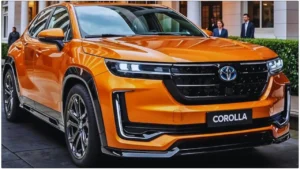Hey there, if you’re eyeing the latest in smartphone tech, the Google Pixel 10 Pro and Samsung Galaxy S25 Ultra are tough to beat. Released in August 2025 and February 2025 respectively, these flagships pack cutting-edge features tailored for different vibes.
I’ve dug into real-world tests from sources like GSMArena, PhoneArena, and hands-on reviews to break it down. Whether you’re a photo enthusiast or a power user, let’s see which one fits your life. (And yeah, check out this side-by-side video from Techmo for visuals.)
Design and Build: Comfort vs Commanding Presence
Ever held a phone and thought, “This just feels right”? That’s the Pixel 10 Pro in a nutshell. At 207 grams with rounded edges and a compact 6.3-inch frame, it’s built for easy one-handed use. Made with recycled materials for that eco-touch, it’s IP68-rated for dust and water resistance. Perfect if you’re always on the move.
The Galaxy S25 Ultra, on the other hand, tips the scales at 218 grams with a boxier, premium titanium build. Its 6.9-inch body screams professional, complete with a subtle camera bump and the iconic S Pen slot. Also IP68-protected, it feels robust—like a tool for creators who want something substantial.
Bottom line: Go Pixel for portability; S25 Ultra for that executive edge.
Display: Vibrant Colors Meet Glare-Free Viewing
Screens are where these phones shine—or don’t, depending on the sun. The Pixel 10 Pro’s 6.3-inch OLED display hits 2,600 nits brightness with spot-on color accuracy, thanks to HDR10+ support. It’s sharp for movies and edits, but without an anti-reflective coating, glare can be an issue outdoors.
Samsung steps up with the S25 Ultra’s 6.9-inch Dynamic LTPO AMOLED 2X screen, also peaking at 2,600 nits. The anti-reflective Gorilla Armor 2 layer cuts reflections big time, making it ideal for bright days. Plus, it resists scratches better, keeping that QHD+ resolution crisp over time.
If outdoor use is your jam, S25 Ultra wins. For indoor vibrancy, Pixel delivers.
Camera Performance: AI Magic vs Pro Video Power
Cameras are why many grab these phones—let’s compare setups.
| Feature | Google Pixel 10 Pro | Samsung Galaxy S25 Ultra |
|---|---|---|
| Main Sensor | 50MP wide | 200MP wide |
| Ultrawide | 48MP | 50MP |
| Telephoto | 48MP (5x optical zoom) | 50MP (5x) + 10MP (3x) |
| Front Camera | 42MP | 12MP |
| Video Max | 8K | 8K with superior stabilization |
| Special Tech | AI Pro Res Zoom (up to 100x digital), macro focus-shift | HDR processing, S Pen for precise shots |
The Pixel 10 Pro nails AI-driven creativity. Its macro shots are stunning, and low-light scenes with mixed lighting come out balanced and detailed. That 100x zoom? Digital but powered by Gemini Nano for surprisingly sharp results.
S25 Ultra dominates video with rock-solid stabilization and native 8K. Optical 10x zoom means clearer distant shots, and it’s a beast for content creators. In standard low-light, it’s consistent, though Pixel edges it in complex scenes.
Photogs: Pixel for smart, easy snaps. Videographers: S25 Ultra all the way.
Battery Life: Endurance Test Results
Battery anxiety? Not with these, but one pulls ahead. In real-world tests—like streaming, gaming, and browsing—the Pixel 10 Pro’s 4,870mAh battery lasted longer, ending a full day at 24% remaining. Its Tensor G5 chip optimizes power efficiently, and it stays cooler during heavy use. Supports 45W wired and 25W wireless (with Pixelsnap magnets).
The S25 Ultra’s 5,000mAh pack is solid but drained to 5% in similar scenarios, thanks to the power-hungry Snapdragon 8 Elite. It offers 45W wired too, but intensive tasks like 8K video eat it faster.
Heavy users, pick Pixel for all-day reliability.
Processor and Performance: Speed vs Smooth Efficiency
Power under the hood matters for everything from apps to AI. The S25 Ultra’s Snapdragon 8 Elite (custom Galaxy version) crushes multitasking, gaming, and editing with Vulkan ray tracing for lifelike graphics. Paired with 16GB RAM, it’s a beast for demanding apps.
Pixel’s Tensor G5 focuses on AI smarts and fluid Android 16 experience. With 16GB RAM, it’s efficient for daily tasks but trails in raw benchmarks. Still, Gemini integration makes it proactive—like suggesting actions based on your habits.
Gamers and pros: S25 Ultra. Everyday smooth sailing: Pixel.
Extra Features: Simplicity Meets Versatility
Pixel keeps it simple with AI perks like Camera Coach for better shots and a year of Google AI Pro (2TB storage included). No stylus, but its software shines for quick edits.
S25 Ultra adds the S Pen for drawing and notes, plus a three-times telephoto for portraits. Galaxy AI handles cross-app actions, like summarizing calls. Both get 7 years of updates.
Which One Should You Choose?
It boils down to you. Love compact design, epic battery, and AI photography? Grab the Pixel 10 Pro—starts at $999. Crave video prowess, S Pen, and raw power? S25 Ultra at $1,299 is your match. Both are 2025 toppers, backed by trusted reviews for reliability.
FAQ
When did the Google Pixel 10 Pro and Samsung Galaxy S25 Ultra release?
Pixel 10 Pro launched August 28, 2025; S25 Ultra on February 7, 2025.
Which has better battery life: Pixel 10 Pro or Galaxy S25 Ultra?
Pixel 10 Pro edges out with longer real-world endurance, often leaving more charge at day’s end.
Is the Pixel 10 Pro camera better than S25 Ultra?
Depends—Pixel excels in AI and low-light; S25 Ultra in video and optical zoom.
What’s the price difference between Pixel 10 Pro and Galaxy S25 Ultra?
Pixel starts at $999; S25 Ultra at $1,299 for base models.
Do both phones support fast charging?
Yes, both hit 45W wired; Pixel adds 25W wireless with magnets, S25 Ultra needs a case for Qi2.



